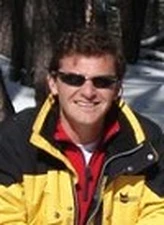Peter A. Troch

The 2011 John Dalton Medal is awarded to Peter A. Troch for his seminal contributions to hydrology in the areas of modelling, remote sensing and development of new ecohydrologic theories.
Peter A. Troch graduated from the University of Ghent (Belgium), where he received a PhD in Hydrology. In 1999 he moved to the Netherlands to become full professor in Hydrology and Quantitative Water Management of Wageningen University. In November 2005 he joined the Department of Hydrology and Water Resources of the University of Arizona.
Through his outstanding publication record, and through participation in and leadership of several international research initiatives, Troch has become a world leader in his field. Of particular note is his pioneering work on the hillslope-storage Boussinesq model and a revitalization of Robert Horton’s 70-year old work on vegetation water use efficiency, his leadership of the CAHMDA series of workshops on data assimilation and his current leadership of the NSF Hydrologic Synthesis project.
Contributions to hydrology: Analysis and modelling of run-off generation processes on hillslopes and catchments. Peter’s early work focused on combining hydrological data analysis with hydraulic groundwater theory to estimate catchment-scale aquifer parameters. This work led to the development of a parsimonious hillslope hydrological model, the hillslope-storage Boussinesq (hsB) model, which accounts for natural landscape geometric complexity, such as convergence /divergence and concave/convex profiles. From the hsB equation a hillslope similarity index, the hillslope Péclet number, was developed, and with students and post-docs he developed and tested scaling relationships to predict similarities in subsurface response at hillslope to catchment scales. The hsB theory is now well established in catchment hydrology and has inspired many related studies outside of Peter’s group. Furthering insight into the connection between climate, land use and ecohydrological response Peter’s contributions for improved understanding of the dynamic of soil moisture variability and the role of climate, topography, vegetation and soil properties is now well recognized. He also investigated the role of differences in solar energy input in hydrologic flow paths and water transit times, and demonstrated that landscape aspect strongly determines mean water transit times through differences in catchment evolution driven by available energy and moisture. This work led to the development of a science plan now being implemented at one of 6 US Critical Zone Observatories. Possibly Peter’s most significant contribution to the field of ecohydrology is his reinvention of the Horton Index. Observed patterns in the response of vegetation water use to water availability suggests that climate-related short-term adaptation and long-term selection pressures on vegetation act in similar ways independent of ecosystem type. Peter is also lead scientist of the Hillslope Experiment under construction at Biosphere 2 near Tucson. This experiment has the potential to revolutionize the field of Earth science, it being the first controlled and replicated hillslope experiment with full mass and energy balance capability and with a focus on whole system co-evolution.
Remote Sensing of Hydrological States and Fluxes with Data Assimilation: Peter has led several EU research projects that have focused on hydrological applications of new remote sensing technology as well as on data assimilation. His research has shown that it is feasible to map saturated areas at the catchment scale using wet season multi-temporal SAR imagery. Peter A. Troch and co-workers were the first to assimilate surface soil moisture estimates from active microwave observations into a 1-D Richards equation based model and to show that accurate reconstruction of the soil moisture profile was indeed feasible. His more recent work has focused on the use of high-resolution gravity observations (e.g., GRACE) to detect water storage changes at scales ranging from small catchments to entire river basins.
